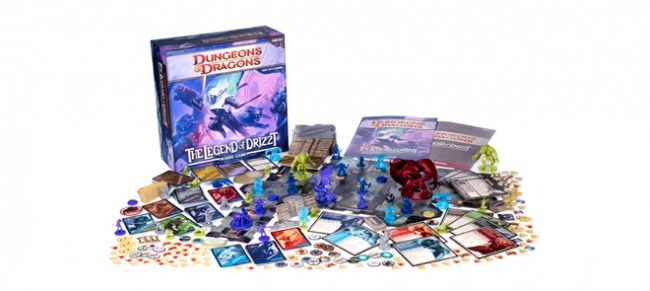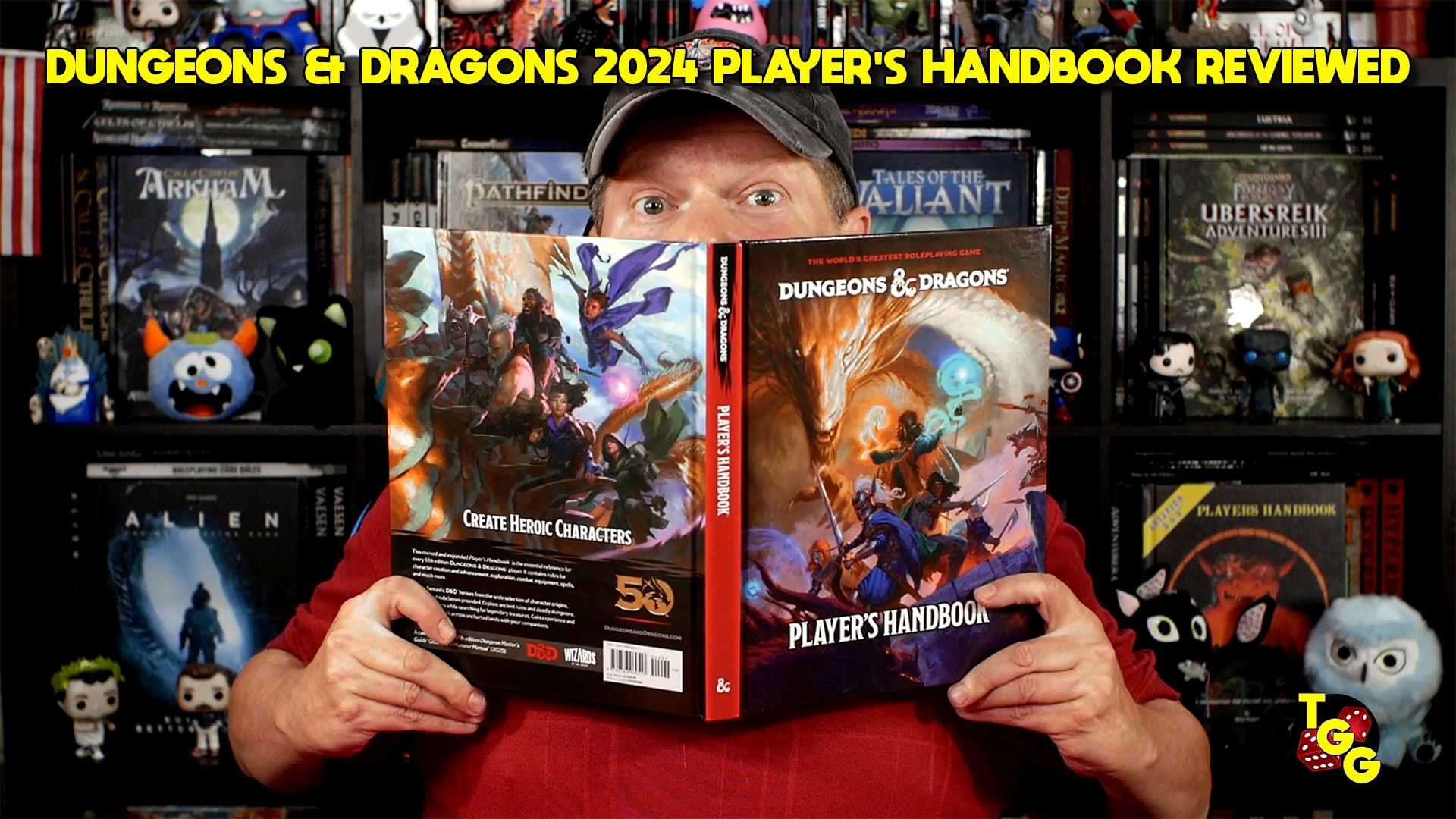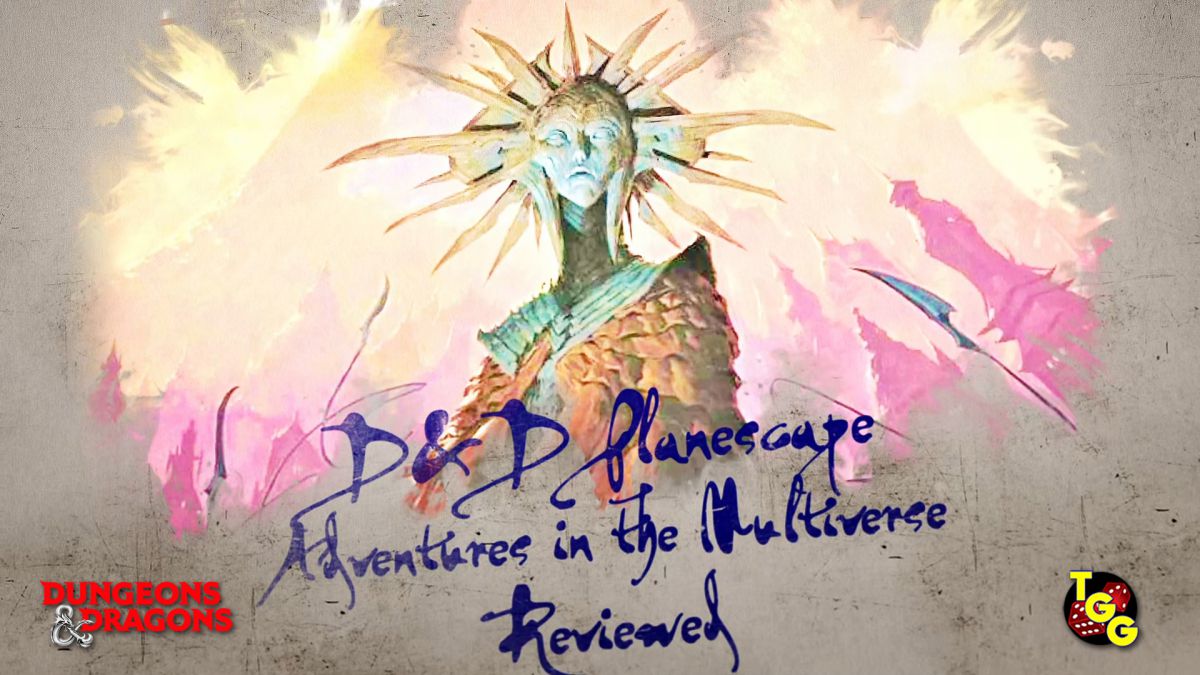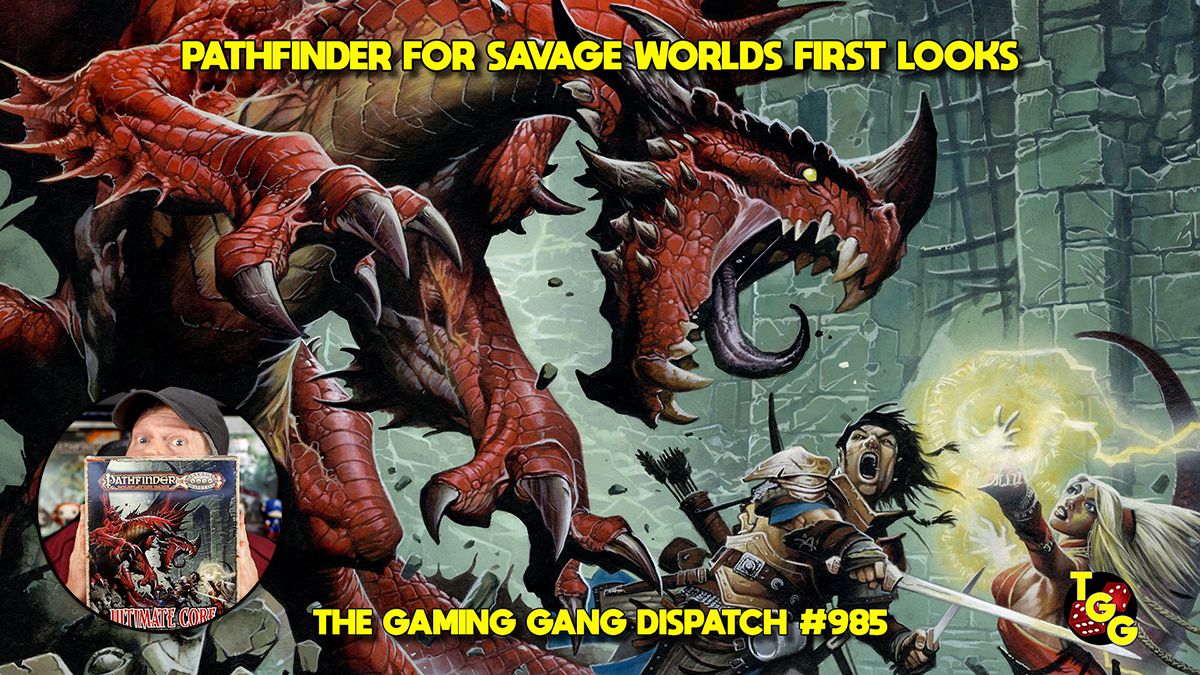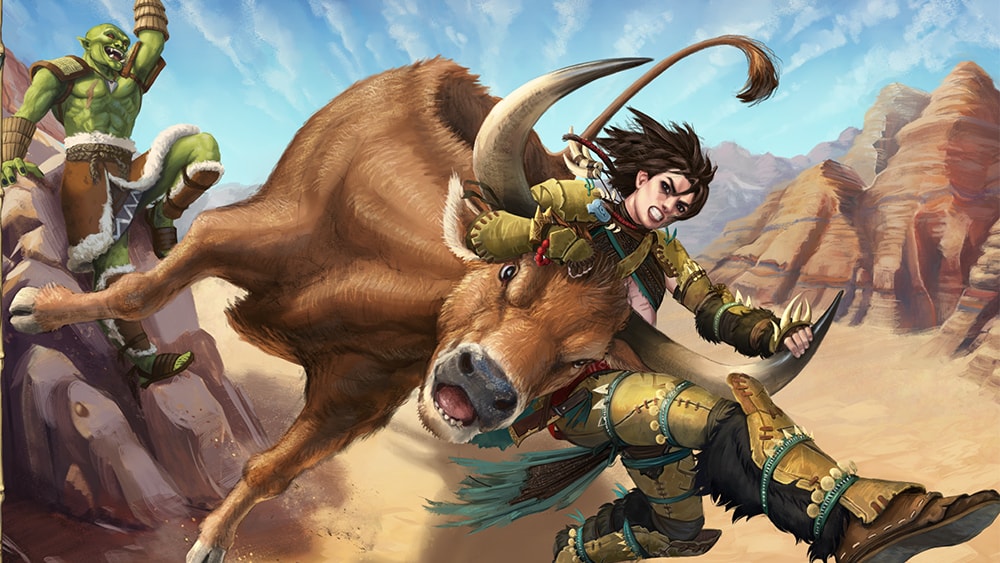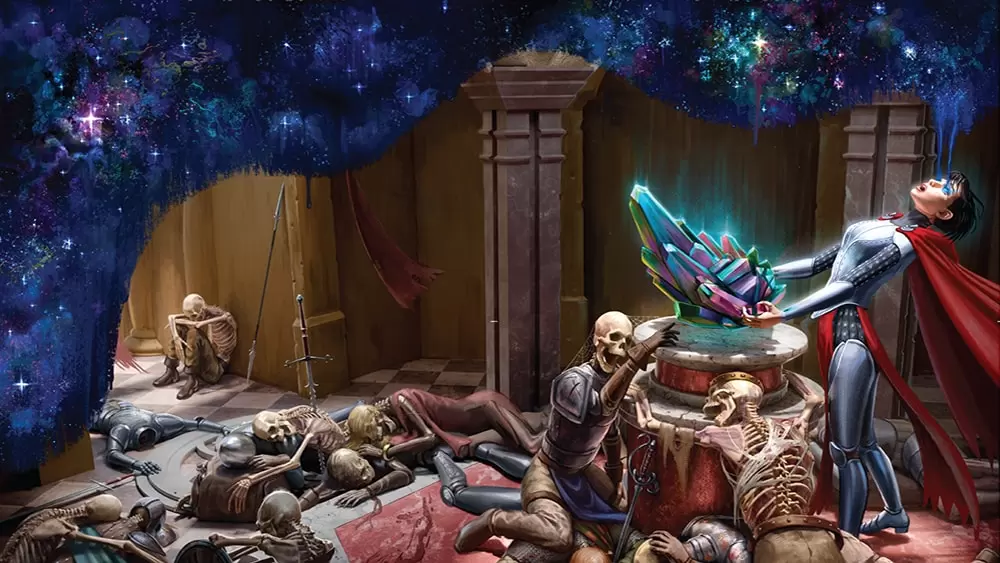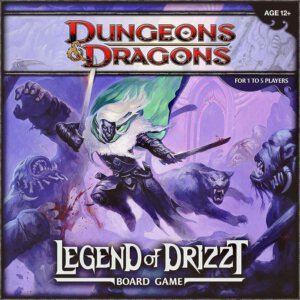
Publisher: Wizards of the Coast
Designer: Peter Lee
Artists: Jason Engle and Steve Prescott
Year: 2011
Players: One to five players
Ages: 12+
Playing Time: 60 Minutes
Genre: D&D adventure board game
MSRP: $64.99
The Legend of Drizzt is the third installment in the line of D&D Adventure Board Games. Castle Ravenloft and Wrath of Ashardalon are the first two in the series, and they all share the same game play, so Wizards of the Coast suggests the components can be mixed and matched to make new unique adventures and dungeons to explore.
The problem is of course, that the games are all adventure based and so you have to wait until WOTC puts out some adventures combining the games before you can actually do it. So far, they have released three bonus adventures on their website combining Ravenloft with Wrath. You’ll need to wait a while before they get some out using elements of all three.
What would help is if they had some rules for generating random adventures, and possibly a special deck of cards to help you to make unique adventures that are different each time.
However, I digress. The Legend of Drizzt is the first in the series that I have had the opportunity to play. The game follows the adventures of Drizzt Do’Urden and his companions from the Forgotten Realms series of books by R.A. Salvatore.
There are over forty plastic character and monster figures of different sizes and shapes including one huge demon figure, a dragon, and a couple of big trolls. The figures are wonderful, in different colored plastic. The water elemental and hypnotic spirit figures are a translucent blue, pretty cool.
The game comes with 36 interlocking cavern tiles which you use to create a unique game board each time you play. They are sturdy and thick and give the feel of exploring a system of underground caverns. The layout will change each time you play as they are drawn randomly while your characters explore, seeking to complete the adventure. The layout really can change the difficulty of a particular adventure, adding to the replayability.
Also included are eight character tiles that are double sided, with level one and level two of the characters on each. All characters start at level one, but can get upgraded to level two during the course of an adventure. Four double sided villain tiles are the big bads in the game, and a deck of monster cards that make up the bulk of the 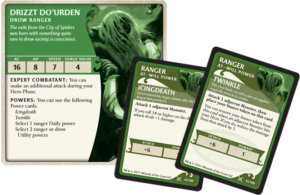
Other cards include a deck of treasure cards, which you draw from after killing a monster. A deck of encounter cards which you will draw from that are usually bad and contain traps and other nastiness, and power cards for your heroes which list your attacks and other special abilities. You don’t get to use all of your powers every game, you are allowed to select several for each adventure.
Finally, a single 20 sided die to use for all of the rolls you will need to make.
The artwork and illustrations are beautiful and the components really are top of the line.
I’m not going to go over all of the rules, just a basic overview of the game play. To begin, you select an adventure from the adventure book. There are thirteen adventures in the book that provide a lot of different ways to play. The first one is a solitaire adventure, to teach you the basic rules of the game. In fact, the first four adventures are played using the basic decks of cards to slowly increase the complexity. After adventure four you add in the advanced decks of cards and it really adds to the meat of the game.
There are five advanced adventures for a group of 2 – 5 heroes, two adventures which pit teams of heroes against each other, one competitive adventure, and one adventure with a traitor component added in. Wizards promises to release more adventures on their website in the future.
The adventure gives you all the specific setup, rules, and winning conditions for that particular adventure. In general, you place the start tile in the center of the table and place your heroes on it. Each turn you will move and attack, or attack and move. Then draw a new cavern tile and place it if you moved next to an unexplored edge of a tile. If you do place a new tile, you will also be drawing and placing a monster on it. If you do not place a new tile, then you will draw a card from the encounter deck and resolve it.
The final phase of a players turn is the villain phase. The monsters and traps that you have placed attack and move according to the instructions on their cards, and if the villain is in play they will also move and/or attack. It is important to note that when you place a monster or trap, their card goes in front of you. They will only move and attack during your turn, as will the monsters placed by the other players. The villain however, moves and attacks during every player’s turn, making them very dangerous indeed.
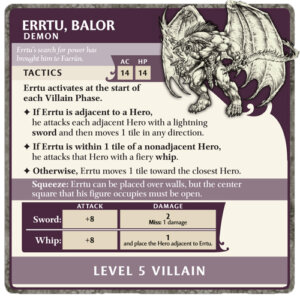
The powers that you get to select for your heroes come in different flavors. At-will powers can be used each turn and are your hero’s main attacks. Daily powers are generally powerful attacks that can be used once and then are flipped over until you are lucky enough to draw a card that allows you to use it again. Utility powers provide other special advantages and might be either flipped after use or not depending upon what the card text describes. The powers allow you to customize your hero to the way you want to play him or her. When you level up, you usually get to pick one additional power to use, which is nice.
The heroes themselves have several stats. Armor class is their defense rating against attacks. Speed is their movement rate through the squares on the tiles. Hit points are how much damage you can take before you are forced to use a healing surge token, and surge is the value of hit points you regain when you actually use a healing surge token. Each adventure allows the use of a certain number of these tokens (two in most cases). If at any point you are reduced to zero hit points and there are no more healing tokens, the players lose and the game is over.
The Legend of Drizzt boils down to a basic hack and slash game. You move, kill monsters, get treasure, and repeat. If you are looking for something deeper then you are looking in the wrong place. Hack and slash can be a lot of fun though, as the millions of people addicted to playing World of Warcraft can attest. I’ve really enjoyed playing The Legend of Drizzt, as did everyone I played it with. The rules are not complex and you are never sure what the next card will bring. If you are unlucky enough to pull two trolls in a row, it can get pretty tense. Conversely, pulling the rare card that reads “Do not place a monster this turn” will pull a sigh of relief out of you every time.
The development and marketing of these games by Wizards of the Coast is brilliant, because the first thing the kids asked me after we played was “When can we play D&D again?” and we haven’t played D&D in years. I had the same feeling myself. It is a great design and excellent concept.
[rwp-review id=”0″]
- A Dungeon Delve for Kids?: A Review of Dungeon! - Oct 24, 2022
- Better, Stronger, Faster | Descent: Journeys in the Dark Second Edition Reviewed - Oct 23, 2022
- Your Planet is Doomed!: Invasion from Outer Space Reviewed - Oct 22, 2022


